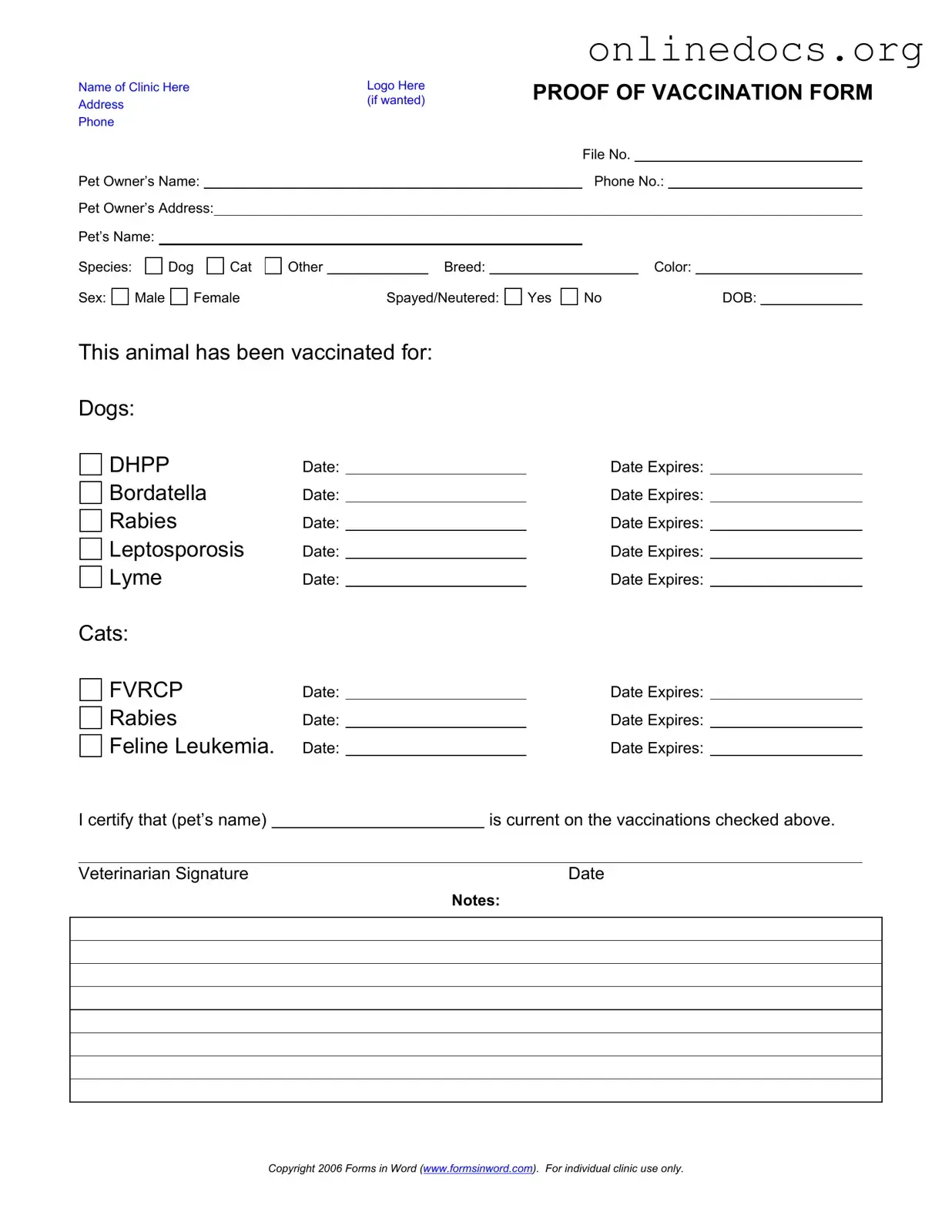The Proof of Vaccination Dog form is similar to the Health Certificate for Pets. This document is often required for travel, especially when flying with pets. It confirms that the animal is healthy and up-to-date on vaccinations. The health certificate includes information about the pet, such as its name, breed, and vaccination history. Like the vaccination form, it requires a veterinarian's signature, ensuring that the information is verified by a professional.
Another document that resembles the Proof of Vaccination Dog form is the Pet Insurance Policy. This policy outlines the coverage for veterinary expenses related to accidents and illnesses. It often includes vaccination requirements for coverage to be valid. Both documents emphasize the importance of vaccinations and maintain records that can be essential for health and financial reasons.
The Animal Boarding Agreement is also similar. This document is used when pet owners leave their animals at a boarding facility. It typically requires proof of vaccinations to ensure the safety of all animals in the facility. Just like the vaccination form, it serves to protect pets from contagious diseases and requires acknowledgment from the pet owner regarding their pet's health status.
The Dog License Application is another comparable document. Many states require pet owners to obtain a license for their dogs, which often includes proof of current vaccinations. This document helps local authorities keep track of pets and ensures they are vaccinated against rabies and other diseases. Both forms serve a regulatory purpose and contribute to public health and safety.
The Adoption Agreement from animal shelters is similar as well. When adopting a pet, new owners often receive documentation that includes vaccination records. This agreement ensures that the animal is up-to-date on its vaccinations, promoting responsible pet ownership. Like the Proof of Vaccination Dog form, it provides vital health information for the new owner.
The Veterinary Treatment Record is another related document. This record details all medical treatments and vaccinations a pet has received. It is often provided during visits to the vet and serves as a comprehensive history of the pet's health. Both the treatment record and the vaccination form are crucial for tracking a pet's medical history and ensuring they receive appropriate care.
When managing a limited liability company (LLC) in California, it is vital to consider various documentation, including the https://californiapdfforms.com/operating-agreement-form, which can serve as a foundation for outlining operational guidelines and member responsibilities, similar to how healthcare records provide essential information about a pet's health and wellness.
Lastly, the Microchip Registration Form shares similarities. When a pet is microchipped, the owner must register the microchip, often providing vaccination information. This document helps reunite lost pets with their owners and ensures that the pet's health information is accessible. Both forms highlight the importance of keeping accurate records for the well-being of the animal.
